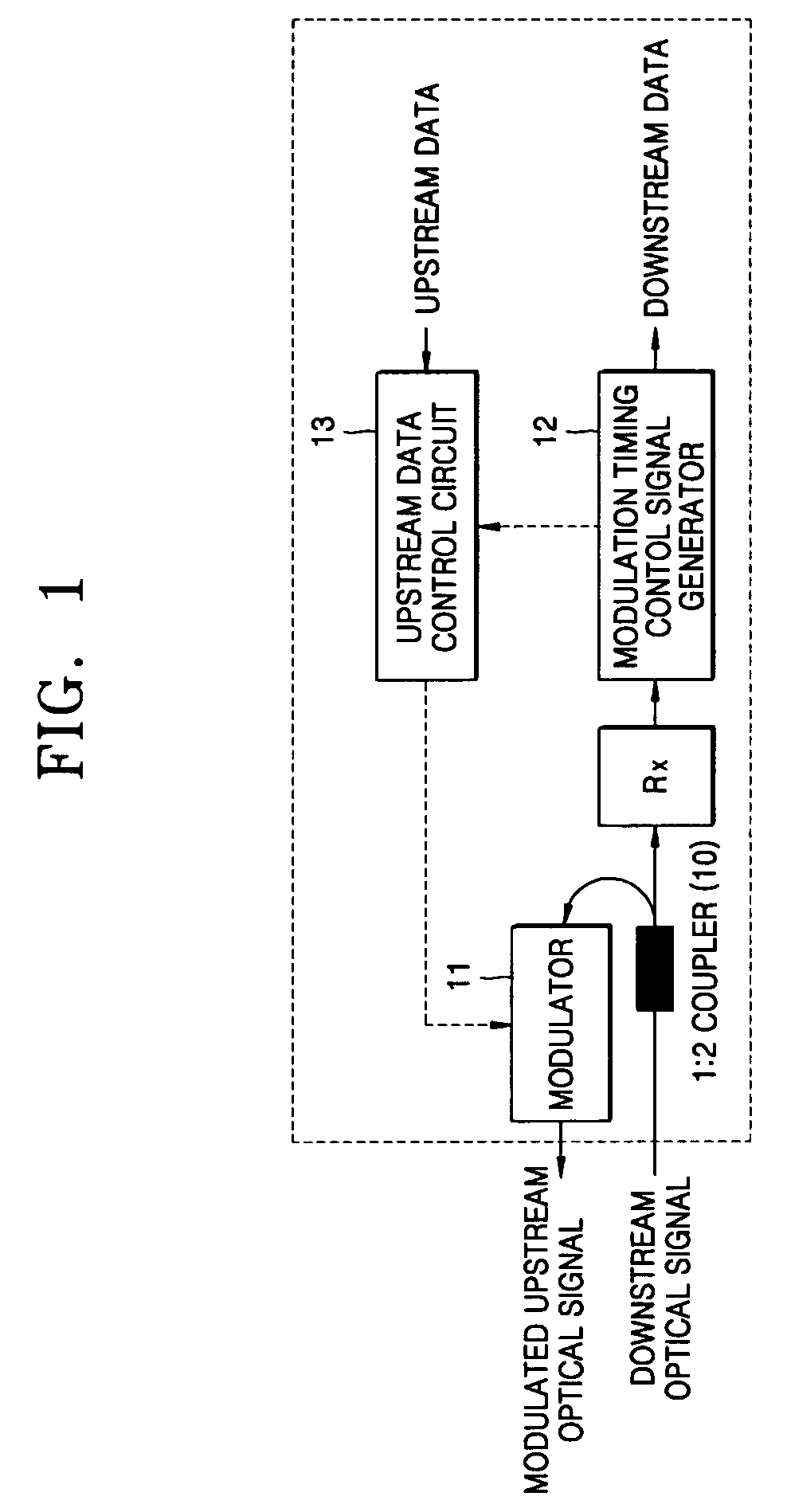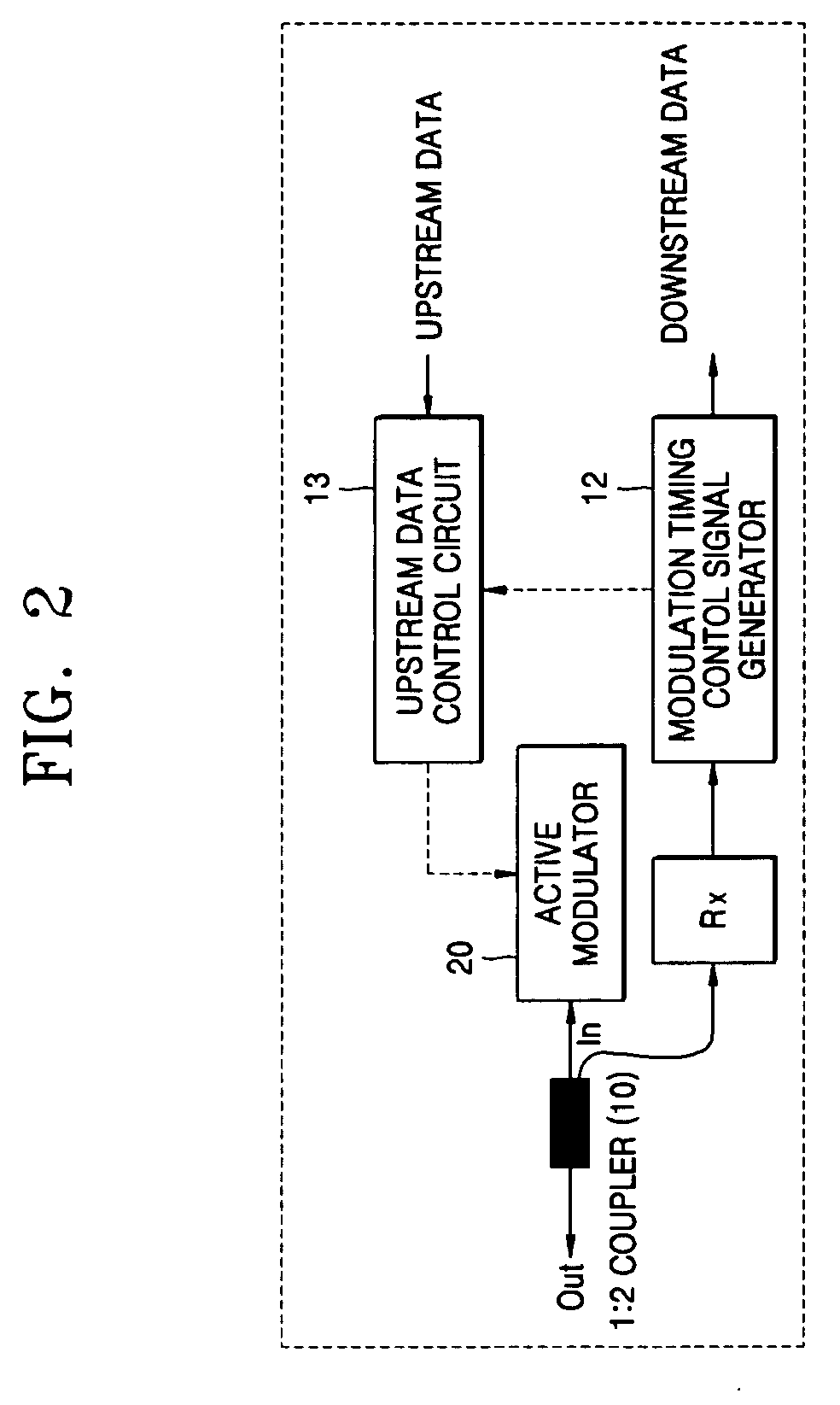Optical network terminal and wavelength division multiplexing based optical network having the same
a wavelength division multiplexing and optical network technology, applied in the field of optical network terminals and wavelength division multiplexing based optical networks, can solve the problems of insufficient bandwidth and transmission quality of current digital subscriber lines (dsl) technologies using unshielded, utp) or cable modem termination systems (cmts) technologies using hybrid fiber coaxial (hfc) cables, and achieve the limitation of providing a broad bandwidth over 100 mbps, and high cost
- Summary
- Abstract
- Description
- Claims
- Application Information
AI Technical Summary
Benefits of technology
Problems solved by technology
Method used
Image
Examples
Embodiment Construction
[0033] For a convenient understanding of the present invention, first, we will discuss some operating conditions thereof in brief.
[0034] To achieve the above objects and solve the technical problems, the present invention proposes to use a Febry Perot laser diode (FP-LD) instead of a Mach-Zehnder modulator as an active modulator. Herein, the proposed modulator is referred to as “an active modulator” because input downstream optical signals are amplified and used for sending upstream data.
[0035] According to the present invention, a single mode light beam from a central office (i.e., a master light beam) is injected into the FP-LD, and among a plurality of wavelengths of the operation modes of the FP-LD, the closest mode to the wavelength of the injected master light beam becomes dominant over others. It is needed a procedure called “a wavelength tracking,” which uses a fact that the monitor photo diode (mPD) used to monitor the operating condition of the FP-LD produces a maximum o...
PUM
 Login to View More
Login to View More Abstract
Description
Claims
Application Information
 Login to View More
Login to View More - R&D
- Intellectual Property
- Life Sciences
- Materials
- Tech Scout
- Unparalleled Data Quality
- Higher Quality Content
- 60% Fewer Hallucinations
Browse by: Latest US Patents, China's latest patents, Technical Efficacy Thesaurus, Application Domain, Technology Topic, Popular Technical Reports.
© 2025 PatSnap. All rights reserved.Legal|Privacy policy|Modern Slavery Act Transparency Statement|Sitemap|About US| Contact US: help@patsnap.com



